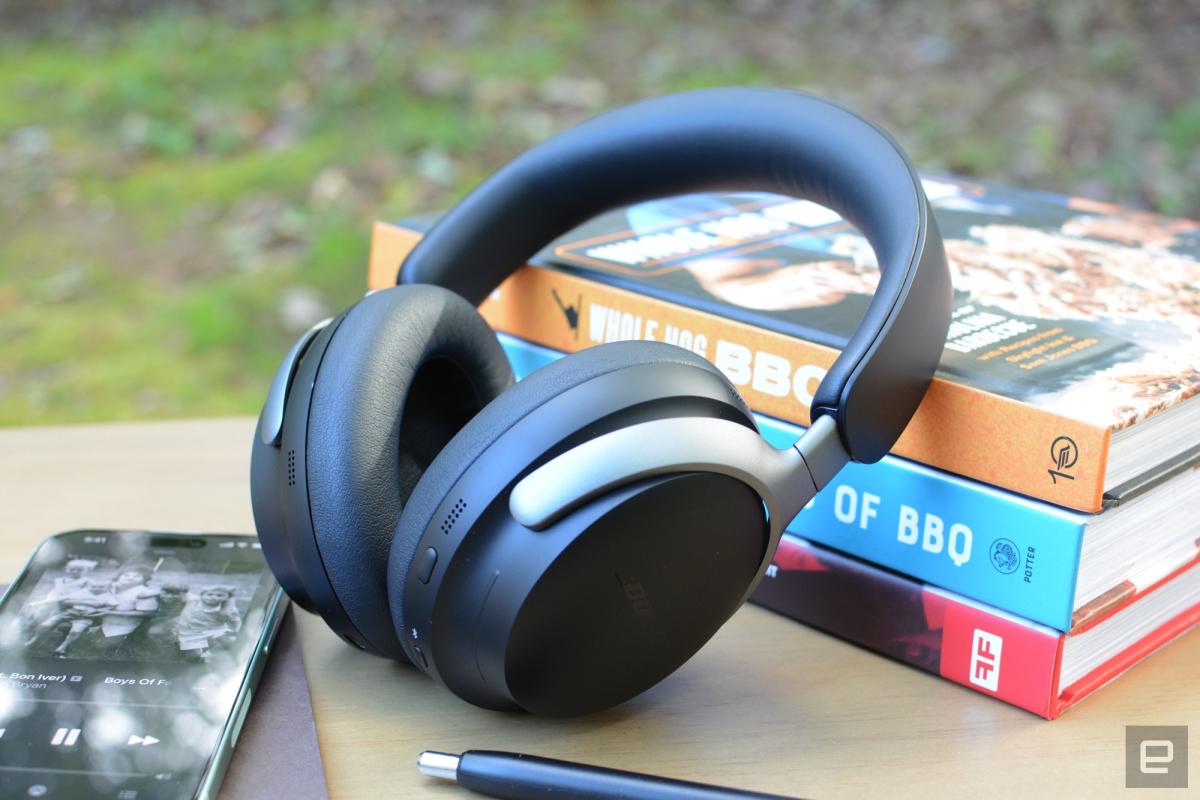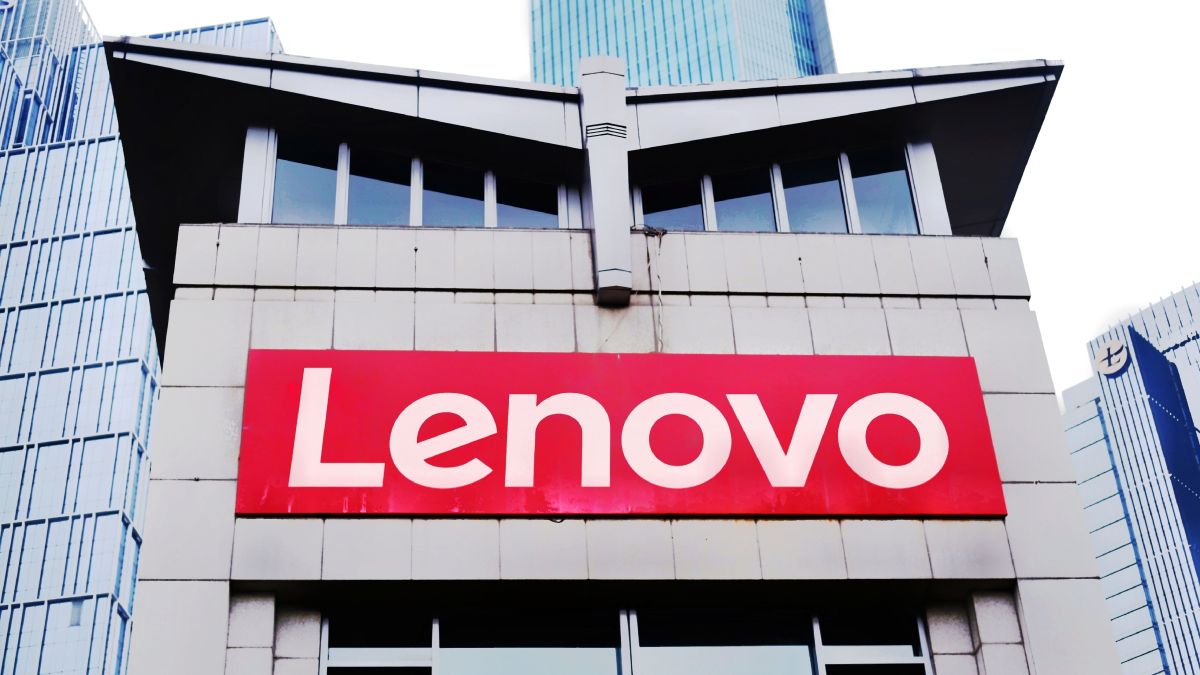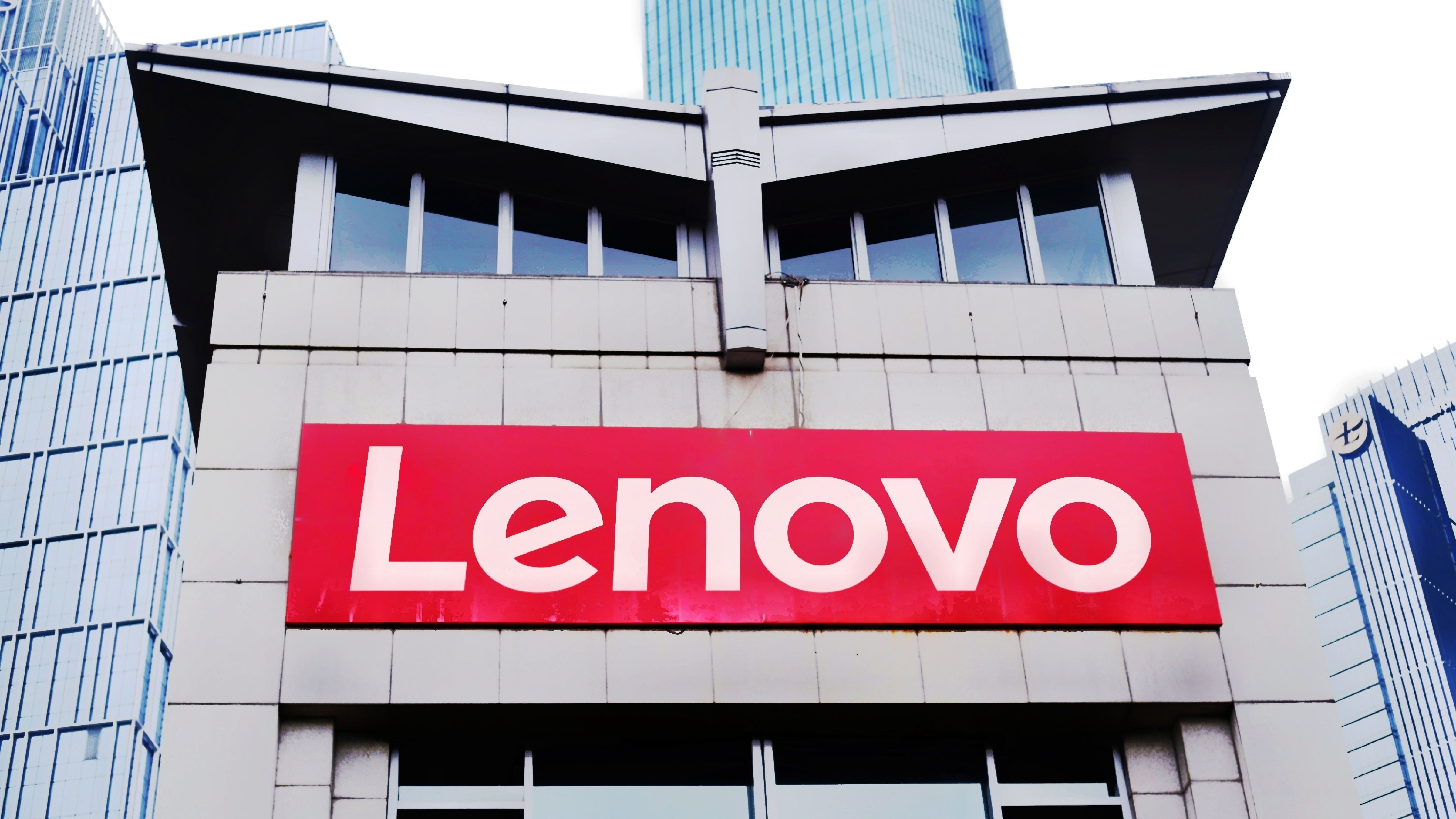Technology
PicsArt’s creative AI playbook: A vision for contextual intelligence, AI agents

Join our daily and weekly newsletters for the latest updates and exclusive content on industry-leading AI coverage. Learn More
Whether you’re an Android or iOS person, most people have heard of PicsArt. The platform launched more than a decade ago and has become one of the go-to services for all things image and video editing, with more than 150 million monthly active users.
However, it hasn’t been an easy journey for the company. Despite being an early mover in the smartphone-based editing domain, the company has seen significant competition from players like Canva and Adobe who have been playing a cat-and-mouse game for quite some time—building their own similar products. When I spoke with Artavazd Mehrabyan, the CTO of the company, at the recent WCIT conference in Armenia, he was pretty vocal about the challenges, saying it is tough to be or at least stay different for long in this market.
“A lot of things that PicsArt had before were copied into the competitors. PicsArt was the first all-in-one editing service on mobile. There was no other player before 2011. We started with this approach and it was copied, among many other things,” Mehrabyan said. He pointed out that the same is happening with AI, where competitors, including mainstream photo services, are offering very similar capabilities.
For example, PicsArt offers object generation, allowing users to use advanced AI to create required photo elements. The same capability has also been incorporated into other products in the category, creating an overlap of sorts.

However, instead of pushing to stand out by adding more tools to its existing batch of over two dozen AI capabilities, the company is looking to make a mark on users by improving the quality of what it is delivering. Specifically, Mehrabyan said, the focus is on how they are productizing and tailoring the features to help customers get to their goal – whether they want to remove a specific object from a vacation image or generate visually appealing advertisements, complete with images and copy.
Training high-quality creative AI
In the early stage, when AI was not a thing, Mehrabyan said most of PicsArt’s technology research and effort went towards making mobile-based editing seamless.
“It was very hard to get all these editing functionality working on the device offline. Then, the next challenge was to scale our ecosystem and infrastructure to support a surging user base. This took us to hybrid infrastructure. We started with multi-cloud and a data center, which, till now, continues to be the best solution as it’s more cost-efficient, highly performant and very flexible,” Mehrabyan explained.
With this tech stack in place, the company launched its first AI feature in 2016, running a bunch of small models offline on user devices. This gradually transformed into a large-scale AI effort, with the company transforming into an AI-first organization and leveraging its infra and backend services to serve larger models and APIs for more enhanced capabilities like background removal/replacement. More recently, with the generative AI wave taking shape, PicsArt started training its own creative AI models from scratch.
In the creative domain, it is very easy to lose a user. A small error here or there (leading to low-quality results) and there’s a good chance the person won’t come back again. To prevent this, PicsArt is extremely focused on the data side of things. It is selectively using data from its own network – marked by users as public and free to edit – for training the AI models.
“We have a special ‘free to edit’ license. If you are posting publicly and tagging your image – from stock photo across any category to a sticker or background – as free to edit, it allows another user of the service to reuse or work on top of it. So, in essence, the user is contributing this image to the community and PicsArt itself,” Mehrabyan said.
The license has been in place from the early days of the service and has given PicsArt a massive stock of user-generated content for training AI. However, as the CTO pointed out, not all of that is of high quality and ready to use right away. The data has to pass through multiple layers of cleansing and processing, from manual and AI-driven, to be transformed into a safe training-ready dataset.
“At the end of this, we have quite a big dataset that is proprietary to PicsArt. We don’t need to have additional data,” he said.
However, having a large volume of high-quality data in hand was just one part of the puzzle.
The real challenge for PicsArt, as Mehrabyan described, was to build the “data flywheel.” A self-reinforcing cycle covering not only data accessibility but also aspects like how to annotate data, how to use it and eventually how to leverage it as part of a continuous learning process to improve over time.
Establishing a feedback loop to achieve this was a long and complex process, he said.
“We built our own annotation technology. We internally developed all related infrastructure and ecosystem technologies, including those for identifying and classifying images, tagging them and adding different types of labels to them,” Mehrabyan said. “Then, we created a team to help refine the pipeline and give feedback over time. It’s mostly been very automatic, AI-driven with human feedback in between so that we can have continuous improvement.”
Feedback loop leads to contextual intelligence
While the human-driven feedback loop has been a critical part in improving PicsArt’s products – enhancing the quality of the outputs they generate – it is also taking the company towards what Mehrabyan calls “contextual intelligence” or the ability of the platform to understand user needs and deliver exactly what they want.
This function is particularly important for the platform’s growing base of business-focused users who are looking to get work done right on their smartphones. Whether that’s generating graphics or a full-fledged ad for a social media campaign. The platform is still mostly used by individuals looking to edit personal content, but the company says its research shows many want to take it to work, especially for marketing use cases.
“Contextual intelligence not only tracks your history or what you were doing to help you to be more productive in your journey but also predicts your next intent. It’s both reactive and proactive,” he explained.
This way, each time an individual uses the platform to create something for their work, they won’t have to define brand language and tonality. The product would already have context in place and use that to generate the required content. Mehrabyan said the company also plans to release a brand kit capability that would allow users to tweak this context to their needs and further improve the quality of generations.
Creative AI agents on the way
Eventually, Mehrabyan says contextual intelligence will lead PicsArt to an agent-based ecosystem. This is where users will have a copilot of sorts – with all relevant knowledge about their work and design preferences – to help them with their tasks.
“This copilot would understand your intent and historical context to provide interactive support and guide you to be even more productive. We see this use case as integrated within the whole PicsArt ecosystem, from the user’s perspective,” he said.
Beyond this, he also expects AI agents will help PicsArt users execute some tasks in bulk. For instance, if a user has to apply the same design or logic of design to several resources, they could use an agent to automate the workflow on their behalf.
This way, the company hopes to be a key driver in the creative industry, sitting ahead of its competitors and allowing users to grow their creativity and eventually businesses, without too much effort.
Mehrabyan noted that AI will bring about a major change but users – from businesses to designers and marketers – must try to understand how it affects them and take advantage of the changes to do more than currently possible.
“From the current point of view, it will affect negatively. But if you take perspective from a different side, like from the future, you will see that those people will leverage AI to learn a lot more. They will no longer be narrow specialists. They’ll cover broader areas deeper and faster with the help of AI,” he noted.
According to Future Markets Insights, the global AI image editor market is projected to grow from $80.3 million in 2024 to $217.9 million by 2034, with a CAGR of 10.5%. Meanwhile, AI-driven generation, which has become a core part of most image editing tools/services, including PicsArt, is estimated to grow 38% from $8.7 billion in 2024 to $60.8 billion in 2030.
Source link
Technology
Oppo Find X8 leaked renders show off the phone’s four colors

The Oppo Find X8 is one of Oppo’s upcoming smartphones, and while it’s leaked before in several capacities, it appears to have leaked for the first time in a series of high-quality renders that showcase the phone in all of its available colors. At least, what we can assume will be all of the phone’s available colors. The Find X8 will be a series of devices that Oppo plans to release soon and will have a variety of models not too unlike what Samsung has done with the Galaxy S24 series.
With that being said, today’s freshly leaked renders are of just the Oppo Find X8. The company is also expected to launch the Find X8 Pro, succeeding last year’s Find X7 Ultra. Oppo plans to launch the new series of phones on October 24, with the MediaTek Dimensity 9400 powering the lineup. A majority of the phone’s specs have also leaked. The phone will reportedly come with a 6.5-inch BOE panel, a 5,700mAh battery, 80W wired charging, and 50W wireless charging.
The phone is also said to be coming with an alert slider, which isn’t too surprising given that it’s a popular feature on OnePlus phones and Oppo owns OnePlus. It’s also shown up on previous Oppo devices.
The Oppo Find X8 will come in four colors according to leaked renders
While it’s unclear what the names of these colors will be, it does appear that Oppo will offer four different options. In a post from Evan Blass on X, you get a good look at the Find X8 from all sides. The renders also show three additional colors that we haven’t seen before. Past leaks have shown the phone coming in a black color option. Not everyone likes black phones though. Luckily, it looks like Oppo will offer the Find X8 in light blue, light pink, and white options for those who prefer phones with a lighter color scheme.
You also get a much better look at the alert slider and the phone’s massive rear camera array. Much like past recent Oppo and OnePlus devices, the power button and the volume button will be on the right side of the device, with the power button being below the volume button.
The SIM card tray and USB-C charging port will be on the bottom of the phone alongside one of the phone’s speakers. Meanwhile, the microphones will be on top. The phone will also feature a camera button.
Oppo says this phone has the thinnest bezels in history
It’s too early to really judge if this is going to be true or not. However, the leaked renders certainly appear to show some pretty thin bezels. The phone also looks to have a flat display. Thin bezels most certainly look nice but it begs the question of how easy it might be to accidentally touch the display and engage an action with less to hold onto from the sides. Either way, Oppo has put together a visually stunning phone with the Find X8.
Technology
The Bose QuietComfort Ultra headphones are back on sale at their lowest price yet

The Bose QuietComfort Ultra headphones came out almost exactly a year ago and now Amazon is selling the Lunar Blue colorway for $329, which is $100 off the MSRP (other hues are full price). We saw this price last week for all four colors during Amazon’s fall sale. Lunar Blue looks to be a limited edition, which could account for the discount, or it could just be Amazon’s way of keeping the deals engines burning after the end of October Prime Day.
This is a return to the all-time low price for Bose’s upgraded noise-cancelling headphones.
Engadget’s Billy Steele reviewed these when they came out last October, awarding them a respectable 86. The difference between this Ultra version and Bose’s standard QuietComfort headphones is the integration of Bose’s version of spatial audio.
The design saw some changes too, with a single multifunction control instead of the three buttons to handle playback and mode functions. There’s also a touch strip to adjust the volume. Some of the plastic was swapped out in favor of metal, and we found the comfort to be the same high level as with previous Bose cans — particularly for long listening sessions. And, of course, the active noise cancellation is still among the best you can get.
As for the Immersive Audio (the marquee feature) it’s good sometimes. It works with all content — not just content created to support it, such as Dolby Atmos in Apple Music or Sony’s 360 Reality Audio. But since it’s relying on signal processing instead of specially engineered sounds, the results vary. Sometimes it sounds great, other times not so much. But thankfully, Bose has improved the audio all around, so even without the new feature, the sound is warmer and clearer than on the standard QCs.
In our guide to the best wireless headphones, we mention QuietComfort Ultra but point out that the $100 price jump from the standard QCs (our current ANC pick) isn’t quite worth it, since the success of the spatial audio isn’t consistent. But with this discount, the blue QC Ultra headphones are currently $20 cheaper than the originals. Could be a good day to go for the pricer/not pricier version.
Follow @EngadgetDeals on Twitter and subscribe to the Engadget Deals newsletter for the latest tech deals and buying advice.
Technology
Innovators to watch: Brands aiming to disrupt their industries with new approaches

Change is inevitable; instead of resisting it, some companies are embracing it by stepping up with fresh ideas that make a real difference in our everyday lives. These innovators are challenging the status quo—whether it’s making healthier products more accessible, helping homeowners turn their spaces into income, or transforming how we care for our loved ones. These ten brands are breaking the mold, offering practical solutions that resonate with people and paving the way for a better, more connected future.
B Generous

B Generous has created the world’s leading credit marketplace for nonprofits. Despite nonprofits holding $8 Trillion worth of assets and generating $3.3 Trillion of annual income, nonprofits are very underserved when it comes to accessing bank credit. B Generous, a venture capital-backed FinTech company, addresses this gap with its first-of-its-kind Accelerate product, a B2B proprietary enterprise credit lending platform that provides upfront capital to nonprofits secured against future revenue. With backing from socially responsible banks and a venture capital round of over $10 million from leading VC funds in Silicon Valley and New York, B Generous has received more than $550 million in loan requests from more than 7,500 nonprofits within its first few months of launching and has already funded millions of dollars in loans. “We provide nonprofits with access to immediate capital so they can worry less about fundraising,” says CEO Dominic Kalms.
To learn more, visit bgenerous.com.
Credit Gnomes

Credit Gnomes is shaking up the property management industry by transforming rent collection through its payment/credit reporting program. The company addresses the inefficiencies of traditional rent collection systems by reporting tenants’ rental payment data directly to major credit bureaus—Experian, Equifax, and TransUnion. In doing this, the company helps reduce delinquency, improve tenant screening, and provide property managers with an additional revenue stream. With Credit Gnomes, property managers can encourage timely payments and reward residents by helping them build their credit profiles. Key features include monthly reporting, enhancing tenants’ credit profiles in real-time for timely or late payments, and offering dispute management services to handle credit reporting discrepancies. “We want to change the collections process from reactive rent collections to proactive rent payments,” says CEO Dave Haldi. “Our technology not only benefits property managers by reducing costs but also supports tenants in building a positive credit history.”
To learn more, visit creditgnomes.com.
Empowered-Home

Empowered-Home is a virtual health platform enabling chronically ill and aging individuals to safely stay in their homes, while providing caregivers with real-time situational awareness of patients’ health status. Intuitive situational awareness and AI-driven insights allow providers to optimize outcomes and proactively improve efficiency. With remote monitoring, AI-driven analytics, and real-time data integration within the clinical workflow, Empowered-Home addresses many challenges providers face under value-based care reimbursement models. The platform provides timely, actionable insights so clinicians can respond immediately to health status changes, reducing the overall burden on the healthcare system and significantly improving patient quality of life while reducing care inequities often observed among chronically ill populations. CEO Walt Pistor states, “Empowering patients and homes with the latest technology allows patients to live where they’re most comfortable while ensuring family members are kept aware that they receive the care they need when they need it—wherever home may be.”
To learn more, visit empowered-home.com.
Flockx

Flockx is a different kind of social app that integrates AI Sidekicks into your social life to create a unique blend of human and AI interactions. The platform addresses the growing problem of social isolation by helping users find and connect with like-minded people in their local communities. Unlike traditional social apps that keep users glued to their screens, Flockx’s AI companions encourage real-world engagement by identifying and suggesting local activities or gatherings tailored to each user’s interests. The app solves the problem of finding and participating in meaningful social activities by showcasing these opportunities on a map, covering all types of events. This approach helps users discover and join local groups and activities that they might otherwise miss. “Our AI Sidekicks aren’t just about enhancing your social life—they’re about getting you out there, engaging with the world, and building connections that matter,” says Devon Bleibtrey, CEO of Flockx.
To learn more, visit flockx.io.
LandSkyAI

LandSkyAI delivers autonomous robotics solutions to address the growing challenges in the security industry. Traditional security methods, which rely heavily on human personnel, are increasingly burdened by labor shortages, high costs, and the complexities of integrating new technologies. LandSkyAI’s approach solves these problems by providing a turnkey solution that automates surveillance and inspection through advanced AI-powered drones and ground robots. Their platform offers a seamless, subscription-based model that allows organizations to enhance their security operations without the hassle of complex implementation. By handling everything from deployment to maintenance, LandSkyAI ensures that its clients receive continuous, proactive security coverage with minimal effort on their part. Founder Jake Shild explains, “We’ve created a package that eliminates the extra resources typically required from end users, making the adoption of robotics simple and creating a true automated experience.”
To learn more, visit www.landsky.ai.
Makeena

Makeena is transforming access to healthier, eco-friendly products with its innovative cashback and loyalty rewards platform. Makeena’s app seamlessly connects users with products that match their dietary needs and lifestyle choices, incentivizing purchases and fostering deeper brand engagement through interactive features. For brands, Makeena provides a powerful toolset to drive product trials, boost sales, and build lasting customer loyalty. The platform’s real-time insights, derived from first-party consumer-generated data, enable brands to refine their marketing strategies with precision. Founder and CEO Karen Frame explains, “In short, Makeena helps consumers discover, find, and earn cash and rewards on better products, no matter where they shop, while enabling brands to deepen their engagement with consumers and expand their market reach.”
To learn more, visit makeena.com.
NextNest

NextNest helps homeowners and renters generate extra income whenever they travel. In cities across North America and Europe, like Toronto, residents often spend over 60% of their income on rent or mortgage payments, highlighting the severe housing affordability crisis. NextNest offers a solution by transforming homes into premium short-term rentals while owners go on vacation, returning them 70-80% of their rental income when they return home. Becoming a co-host is simple: sign up online, set travel dates, and let NextNest take care of the rest. They manage everything from listing the property on Airbnb to guest interactions and property maintenance. Homeowners return to find their homes in pristine condition and extra income in their bank accounts. “We’re changing how people think about short-term rentals,” says CEO Desmond Yeo. We help homeowners use their properties to boost financial stability and enjoy life without adding to housing unaffordability.
To learn more, visit www.nextnest.vacations.
R-Daniel

R-Daniel is a state-of-the-art AI-driven analytics platform tailored for executives in the B2B manufacturing and distribution sectors. Acting as a dynamic “newspaper” for your company, R-Daniel delivers up-to-date insights on revenue and profit, ensuring leaders are always informed of the latest developments. Unlike traditional dashboards constrained by preset parameters, R-Daniel’s proprietary features—Automatic Discovery and Relevant Push—autonomously identify critical insights, adapting dynamically to organizational behavior through self-learning algorithms. This innovative approach enables executives to swiftly capitalize on opportunities, mitigate revenue losses, and optimize sales strategies with minimal effort. Notably, R-Daniel excels at uncovering “unknown unknowns,” critical blind spots that conventional solutions often miss. R-Daniel empowers businesses to make informed decisions with unparalleled speed and precision by integrating up-to-date and historical data. As Co-Founder Juan Hurtado states, “R-Daniel’s ability to think like a business leader and autonomously surface key insights is what sets us apart in the industry.”
To learn more, visit r-daniel.ai
Visible Assets

Visible Assets specializes in advanced asset tracking using RuBee, an active, low-frequency wireless technology designed to solve the limitations of traditional RFID and GPS systems. RuBee operates in harsh environments, where other technologies fail, by effectively penetrating through liquids, metals, and underground. Rubee is designed to be safe near and on explosives, fuzed ordinance and built to minimize security risks. This versatility makes it indispensable for industries such as defense, manufacturing, and logistics, where reliable tracking of high-value assets is critical. Key features of RuBee include long battery life, secure and encrypted data transmission, and immunity to environmental interference like noise and temperature fluctuations. The system integrates seamlessly with existing infrastructure, providing real-time visibility and control over assets. Visible Assets’ technology is particularly suited for environments that require high security and precision. CEO John Stevens notes, “With RuBee, we’re providing an AIT solution that works”
To learn more, visit www.ru-bee.com.
YouSolar

YouSolar’s PowerBloc® is a multi-source nanogrid that is the first practical utility power replacement that can power everything from small appliances to large loads like air conditioners and electric vehicles. PowerBloc allows homes and businesses to become independent from an increasingly unreliable utility grid. PowerBloc makes the grid secondary or even optional. It is modular and scalable and seamlessly integrates solar, grid, and generator power with battery storage. It works with the grid or no grid at all. As a “grid-forming” power supply to the house, PowerBloc requires no utility approval. By addressing the common challenges of grid dependency—such as rising energy costs, outages, and lack of control—YouSolar empowers consumers to take charge of their energy future. “Our vision has always been to power the world with a compact, entirely plug-and-play system that can be deployed anywhere, making sustainable energy accessible to everyone,” says Arnold Leitner, Founder and CEO of YouSolar.
To learn more, visit yousolar.com
VentureBeat newsroom and editorial staff were not involved in the creation of this content.
Technology
Three Call of Duty games are coming to Xbox Cloud Gaming on October 25th

Microsoft is bringing Call of Duty: Black Ops 6, Call of Duty: Modern Warfare III and Call of Duty: Warzone to Xbox Cloud Gaming later this month. This means Call of Duty: Black Ops 6 will be playable on Xbox Cloud Gaming at launch on October 25th, with Warzone and Modern Warfare III cloud support also getting enabled on the same day.
This is the first time a Call of Duty game has been available at launch on Xbox Cloud Gaming, following Microsoft’s acquisition of Activision Blizzard last year. “This is a first for the Call of Duty franchise, and a win for the community,” says Ashley McKissick, corporate vice president of gaming experiences & platforms at Xbox.
You’ll need an Xbox Game Pass Ultimate subscription to access the three Call of Duty games on Xbox Cloud Gaming, and they’ll all be available to play across consoles, PCs, mobile devices, Amazon Fire TV devices, Meta Quest headsets, and some Samsung TVs.
The launch of Call of Duty into Xbox Cloud Gaming will arrive just ahead of Microsoft’s plans to let you stream your own games with Xbox Cloud Gaming next month. I revealed last week that Microsoft is getting ready to test the ability to stream games that you own that aren’t part of the existing Xbox Game Pass library in November.
The test will start with Xbox Insiders at first and a limited selection of additional games, before expanding to more Xbox users and more games. Over the past couple of years, Microsoft has been working to ready its Xbox Cloud Gaming servers to eventually support streaming thousands of games.
Microsoft is also enabling Xbox game purchases in its Xbox mobile app on Android in the US on November 1st. Microsoft is able to do this thanks to a court ruling last week that forces Google to stop requiring Google Play Billing for apps in the Play Store on November 1st. You’ll eventually be able to buy an Xbox game through the Android app and stream it immediately to your device.
Technology
Lenovo Tech World 2024 — all the news as it happens


Greetings from Seattle! TechRadar Pro is here for Lenovo Tech World 2024, covering all the latest news and announcements from the show.
We’re expecting a whirlwind few days, full of news and updates on everything from AI PCs to data centers and much more.
The event kicks off tomorrow with an opening keynote from Lenovo Chairman and CEO Yuanqing Yang, so stay tuned for all our live coverage!
Technology
Vuzix M400 smart glasses get Android 13 upgrade for security


Vuzix has upgraded its flagship M400 enterprise smart glasses with Android 13, offering businesses a more secure, efficient way to manage their wearable tech.
The update ensures that users benefit from advanced security protocols and improved device management, making it easier for companies to deploy these smart glasses across large teams while maintaining the highest levels of security.
Vuzix said the Android 13 upgrade, now available to all M400 users, introduces several key enhancements. These include better Wi-Fi networking algorithms, refined Android permissions management, and an updated developer API. The new Android version also ensures ongoing security support, which is crucial for industries relying on Vuzix’s devices for hands-free, real-time data access.
“Our goal is to keep our smart glasses at the forefront of innovation while giving our customers the tools they need to succeed,” said Paul Travers, president and CEO of Vuzix. “With Android 13, our customers can benefit from advanced security features and streamlined device management, which is crucial for companies planning larger deployments.”
Travers said the update builds on Vuzix’s earlier innovations, including the Ultralite smart glasses introduced in 2023. The Ultralite design, which focuses on practicality with features like hands-free notifications and navigation, set a new standard for smart eyewear. Their lightweight design (weighing just 38 grams) and microLED technology make them a user-friendly, low-power solution, ideal for enterprise and consumer use.
The Android 13 upgrade also empowers developers with updated APIs, moving from Android API 30 to 33, offering a more robust platform for creating tailored software solutions for the M400. This improved compatibility with third-party apps allows businesses to customize their workflows further, boosting productivity and efficiency.
Demand for wearable tech continues to grow across industries such as health care, logistics, and field services, where hands-free operations and real-time data access are crucial. With these enhancements, Vuzix’s M400 smart glasses remain a go-to solution for businesses seeking to improve operational efficiency through cutting-edge wearable technology.
“Deploying Android 13 helps our enterprise customers manage their devices securely and benefit from the latest Android features within third-party apps,” Travers added.
Founded in 1997, Vuzix has a history of innovation in augmented reality and smart glasses technology and provides solutions for industries including defense, health care, and manufacturing.
-

 Science & Environment4 weeks ago
Science & Environment4 weeks agoHyperelastic gel is one of the stretchiest materials known to science
-

 Technology4 weeks ago
Technology4 weeks agoWould-be reality TV contestants ‘not looking real’
-

 Science & Environment4 weeks ago
Science & Environment4 weeks agoHow to unsnarl a tangle of threads, according to physics
-

 Science & Environment4 weeks ago
Science & Environment4 weeks ago‘Running of the bulls’ festival crowds move like charged particles
-

 Science & Environment4 weeks ago
Science & Environment4 weeks agoMaxwell’s demon charges quantum batteries inside of a quantum computer
-

 Science & Environment4 weeks ago
Science & Environment4 weeks agoLiquid crystals could improve quantum communication devices
-

 Womens Workouts3 weeks ago
Womens Workouts3 weeks ago3 Day Full Body Women’s Dumbbell Only Workout
-

 Science & Environment4 weeks ago
Science & Environment4 weeks agoQuantum ‘supersolid’ matter stirred using magnets
-

 Technology3 weeks ago
Technology3 weeks agoIs sharing your smartphone PIN part of a healthy relationship?
-

 Science & Environment3 weeks ago
Science & Environment3 weeks agoX-rays reveal half-billion-year-old insect ancestor
-

 Science & Environment4 weeks ago
Science & Environment4 weeks agoWhy this is a golden age for life to thrive across the universe
-

 Science & Environment4 weeks ago
Science & Environment4 weeks agoSunlight-trapping device can generate temperatures over 1000°C
-

 Science & Environment4 weeks ago
Science & Environment4 weeks agoNerve fibres in the brain could generate quantum entanglement
-

 Science & Environment4 weeks ago
Science & Environment4 weeks agoQuantum forces used to automatically assemble tiny device
-

 Science & Environment4 weeks ago
Science & Environment4 weeks agoHow to wrap your mind around the real multiverse
-

 Science & Environment4 weeks ago
Science & Environment4 weeks agoITER: Is the world’s biggest fusion experiment dead after new delay to 2035?
-
News4 weeks ago
the pick of new debut fiction
-

 Science & Environment4 weeks ago
Science & Environment4 weeks agoA slight curve helps rocks make the biggest splash
-

 News3 weeks ago
News3 weeks agoOur millionaire neighbour blocks us from using public footpath & screams at us in street.. it’s like living in a WARZONE – WordupNews
-

 Science & Environment4 weeks ago
Science & Environment4 weeks agoLaser helps turn an electron into a coil of mass and charge
-

 Science & Environment4 weeks ago
Science & Environment4 weeks agoPhysicists are grappling with their own reproducibility crisis
-

 Science & Environment4 weeks ago
Science & Environment4 weeks agoNuclear fusion experiment overcomes two key operating hurdles
-

 News4 weeks ago
News4 weeks ago▶️ Hamas in the West Bank: Rising Support and Deadly Attacks You Might Not Know About
-

 Science & Environment4 weeks ago
Science & Environment4 weeks agoTime travel sci-fi novel is a rip-roaringly good thought experiment
-
Business2 weeks ago
Eurosceptic Andrej Babiš eyes return to power in Czech Republic
-

 News4 weeks ago
News4 weeks agoYou’re a Hypocrite, And So Am I
-

 Sport4 weeks ago
Sport4 weeks agoJoshua vs Dubois: Chris Eubank Jr says ‘AJ’ could beat Tyson Fury and any other heavyweight in the world
-

 News4 weeks ago
News4 weeks ago▶️ Media Bias: How They Spin Attack on Hezbollah and Ignore the Reality
-

 Science & Environment4 weeks ago
Science & Environment4 weeks agoCaroline Ellison aims to duck prison sentence for role in FTX collapse
-

 News4 weeks ago
News4 weeks agoNew investigation ordered into ‘doorstep murder’ of Alistair Wilson
-

 Science & Environment4 weeks ago
Science & Environment4 weeks agoA new kind of experiment at the Large Hadron Collider could unravel quantum reality
-

 Technology2 weeks ago
Technology2 weeks agoQuantum computers may work better when they ignore causality
-
Business2 weeks ago
Should London’s tax exiles head for Spain, Italy . . . or Wales?
-

 Football2 weeks ago
Football2 weeks agoFootball Focus: Martin Keown on Liverpool’s Alisson Becker
-

 Sport2 weeks ago
Sport2 weeks agoWatch UFC star deliver ‘one of the most brutal knockouts ever’ that left opponent laid spark out on the canvas
-

 Science & Environment4 weeks ago
Science & Environment4 weeks agoRethinking space and time could let us do away with dark matter
-
News4 weeks ago
The Project Censored Newsletter – May 2024
-

 Technology3 weeks ago
Technology3 weeks agoWhy Machines Learn: A clever primer makes sense of what makes AI possible
-

 Technology2 weeks ago
Technology2 weeks ago‘From a toaster to a server’: UK startup promises 5x ‘speed up without changing a line of code’ as it plans to take on Nvidia, AMD in the generative AI battlefield
-

 MMA2 weeks ago
MMA2 weeks agoConor McGregor challenges ‘woeful’ Belal Muhammad, tells Ilia Topuria it’s ‘on sight’
-

 Technology2 weeks ago
Technology2 weeks agoMicrophone made of atom-thick graphene could be used in smartphones
-
Business2 weeks ago
Ukraine faces its darkest hour
-
Politics3 weeks ago
Robert Jenrick vows to cut aid to countries that do not take back refused asylum seekers | Robert Jenrick
-

 News4 weeks ago
News4 weeks agoIsrael strikes Lebanese targets as Hizbollah chief warns of ‘red lines’ crossed
-

 Health & fitness4 weeks ago
Health & fitness4 weeks agoThe secret to a six pack – and how to keep your washboard abs in 2022
-

 Technology4 weeks ago
Technology4 weeks agoThe ‘superfood’ taking over fields in northern India
-

 Science & Environment4 weeks ago
Science & Environment4 weeks agoA tale of two mysteries: ghostly neutrinos and the proton decay puzzle
-

 Science & Environment4 weeks ago
Science & Environment4 weeks agoFuture of fusion: How the UK’s JET reactor paved the way for ITER
-

 Technology3 weeks ago
Technology3 weeks agoGet ready for Meta Connect
-

 Technology2 weeks ago
Technology2 weeks agoUniversity examiners fail to spot ChatGPT answers in real-world test
-

 Science & Environment4 weeks ago
Science & Environment4 weeks agoUK spurns European invitation to join ITER nuclear fusion project
-
Politics4 weeks ago
UK consumer confidence falls sharply amid fears of ‘painful’ budget | Economics
-

 TV3 weeks ago
TV3 weeks agoCNN TÜRK – 🔴 Canlı Yayın ᴴᴰ – Canlı TV izle
-

 News3 weeks ago
News3 weeks agoWhy Is Everyone Excited About These Smart Insoles?
-

 Health & fitness2 weeks ago
Health & fitness2 weeks agoThe 7 lifestyle habits you can stop now for a slimmer face by next week
-

 Science & Environment4 weeks ago
Science & Environment4 weeks agoPhysicists have worked out how to melt any material
-

 Sport4 weeks ago
Sport4 weeks agoUFC Edmonton fight card revealed, including Brandon Moreno vs. Amir Albazi headliner
-

 News4 weeks ago
News4 weeks agoHow FedEx CEO Raj Subramaniam Is Adapting to a Post-Pandemic Economy
-

 Science & Environment4 weeks ago
Science & Environment4 weeks agoWhy we need to invoke philosophy to judge bizarre concepts in science
-

 CryptoCurrency4 weeks ago
CryptoCurrency4 weeks agoCardano founder to meet Argentina president Javier Milei
-

 MMA3 weeks ago
MMA3 weeks agoRankings Show: Is Umar Nurmagomedov a lock to become UFC champion?
-

 Science & Environment3 weeks ago
Science & Environment3 weeks agoMeet the world's first female male model | 7.30
-

 Womens Workouts3 weeks ago
Womens Workouts3 weeks ago3 Day Full Body Toning Workout for Women
-

 Technology3 weeks ago
Technology3 weeks agoRobo-tuna reveals how foldable fins help the speedy fish manoeuvre
-

 Servers computers3 weeks ago
Servers computers3 weeks agoWhat are the benefits of Blade servers compared to rack servers?
-

 Politics4 weeks ago
Politics4 weeks agoTrump says he will meet with Indian Prime Minister Narendra Modi next week
-

 Science & Environment4 weeks ago
Science & Environment4 weeks agoBeing in two places at once could make a quantum battery charge faster
-
Business4 weeks ago
Thames Water seeks extension on debt terms to avoid renationalisation
-
Politics4 weeks ago
‘Appalling’ rows over Sue Gray must stop, senior ministers say | Sue Gray
-

 Womens Workouts3 weeks ago
Womens Workouts3 weeks agoBest Exercises if You Want to Build a Great Physique
-

 Womens Workouts3 weeks ago
Womens Workouts3 weeks agoEverything a Beginner Needs to Know About Squatting
-

 News3 weeks ago
News3 weeks agoFour dead & 18 injured in horror mass shooting with victims ‘caught in crossfire’ as cops hunt multiple gunmen
-

 Technology2 weeks ago
Technology2 weeks agoThe best robot vacuum cleaners of 2024
-

 Entertainment1 week ago
Entertainment1 week agoChristopher Ciccone, artist and Madonna’s younger brother, dies at 63
-

 Business1 week ago
Business1 week agoWhen to tip and when not to tip
-

 News4 weeks ago
News4 weeks agoChurch same-sex split affecting bishop appointments
-

 CryptoCurrency4 weeks ago
CryptoCurrency4 weeks agoEthereum is a 'contrarian bet' into 2025, says Bitwise exec
-

 News4 weeks ago
News4 weeks agoBrian Tyree Henry on voicing young Megatron, his love for villain roles
-

 Health & fitness4 weeks ago
Health & fitness4 weeks agoThe maps that could hold the secret to curing cancer
-
Business4 weeks ago
JPMorgan in talks to take over Apple credit card from Goldman Sachs
-

 Science & Environment4 weeks ago
Science & Environment4 weeks agoTiny magnet could help measure gravity on the quantum scale
-

 CryptoCurrency4 weeks ago
CryptoCurrency4 weeks agoDecentraland X account hacked, phishing scam targets MANA airdrop
-

 CryptoCurrency4 weeks ago
CryptoCurrency4 weeks agoBitcoin miners steamrolled after electricity thefts, exchange ‘closure’ scam: Asia Express
-

 CryptoCurrency4 weeks ago
CryptoCurrency4 weeks agoDZ Bank partners with Boerse Stuttgart for crypto trading
-

 CryptoCurrency4 weeks ago
CryptoCurrency4 weeks agoLow users, sex predators kill Korean metaverses, 3AC sues Terra: Asia Express
-

 CryptoCurrency4 weeks ago
CryptoCurrency4 weeks agoBlockdaemon mulls 2026 IPO: Report
-

 News4 weeks ago
News4 weeks agoBrian Tyree Henry on voicing young Megatron, his love for villain roles
-

 Science & Environment3 weeks ago
Science & Environment3 weeks agoCNN TÜRK – 🔴 Canlı Yayın ᴴᴰ – Canlı TV izle
-

 Travel3 weeks ago
Travel3 weeks agoDelta signs codeshare agreement with SAS
-

 News3 weeks ago
News3 weeks agoUS Newspapers Diluting Democratic Discourse with Political Bias
-

 Technology4 weeks ago
Technology4 weeks agoiPhone 15 Pro Max Camera Review: Depth and Reach
-

 Science & Environment4 weeks ago
Science & Environment4 weeks agoHow one theory ties together everything we know about the universe
-

 Science & Environment4 weeks ago
Science & Environment4 weeks agoQuantum time travel: The experiment to ‘send a particle into the past’
-

 Science & Environment4 weeks ago
Science & Environment4 weeks agoMost accurate clock ever can tick for 40 billion years without error
-

 CryptoCurrency4 weeks ago
CryptoCurrency4 weeks agoDorsey’s ‘marketplace of algorithms’ could fix social media… so why hasn’t it?
-

 CryptoCurrency4 weeks ago
CryptoCurrency4 weeks agoBitcoin bulls target $64K BTC price hurdle as US stocks eye new record
-
Business4 weeks ago
How Labour donor’s largesse tarnished government’s squeaky clean image
-

 CryptoCurrency4 weeks ago
CryptoCurrency4 weeks agoCoinbase’s cbBTC surges to third-largest wrapped BTC token in just one week
-

 News3 weeks ago
News3 weeks agoShocking ‘kidnap’ sees man, 87, bundled into car, blindfolded & thrown onto dark road as two arrested
-

 Politics3 weeks ago
Politics3 weeks agoHope, finally? Keir Starmer’s first conference in power – podcast | News

You must be logged in to post a comment Login